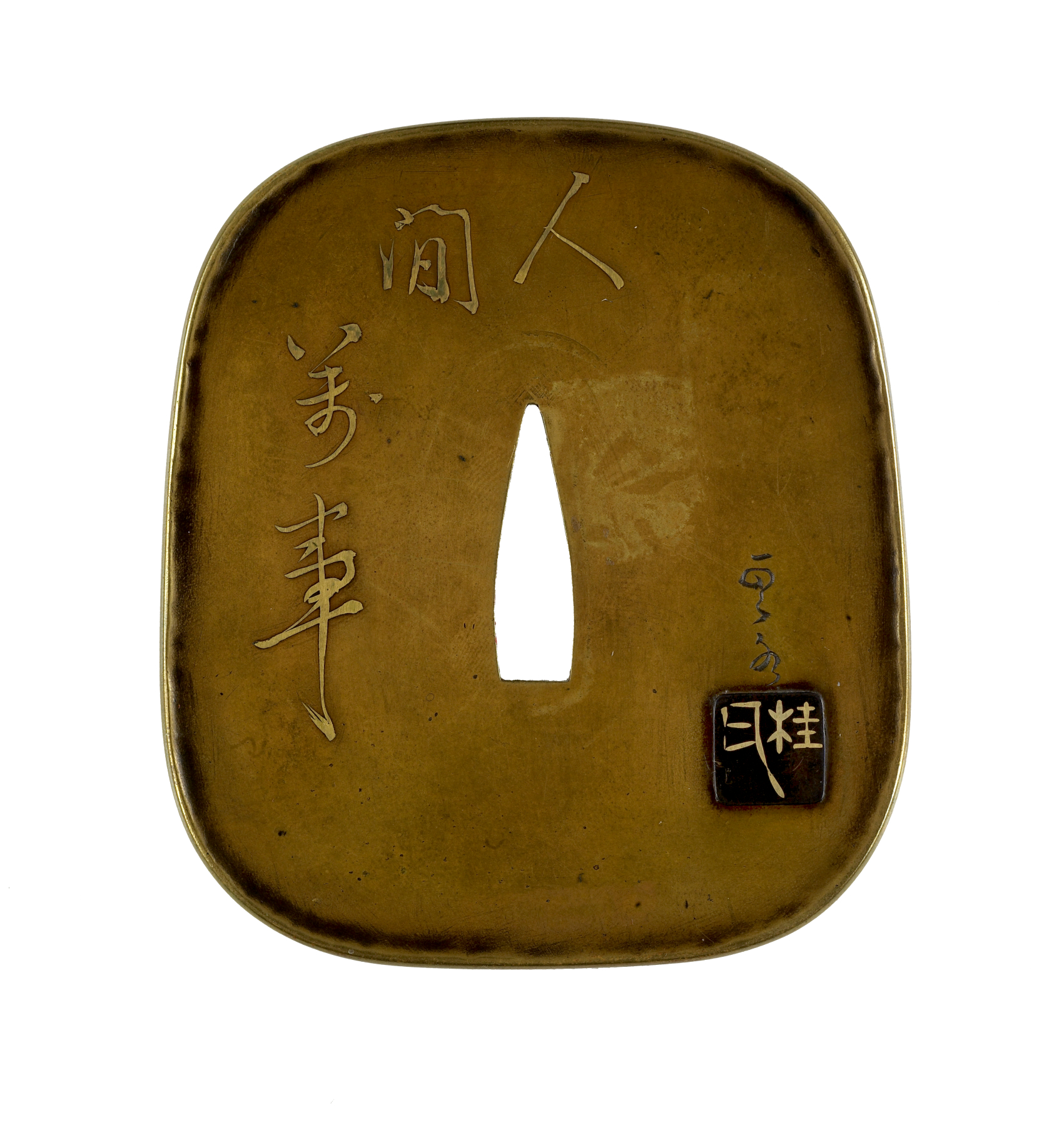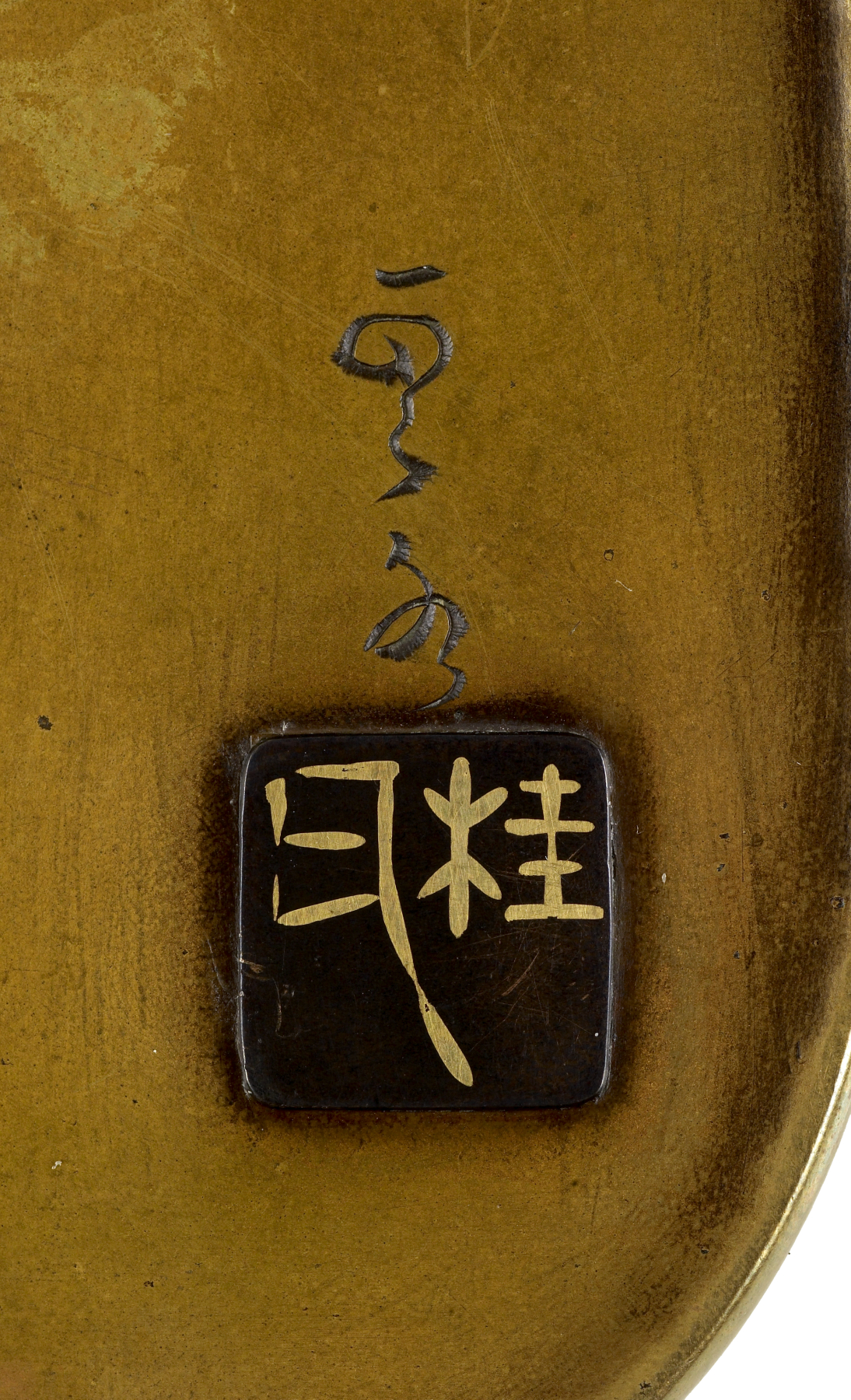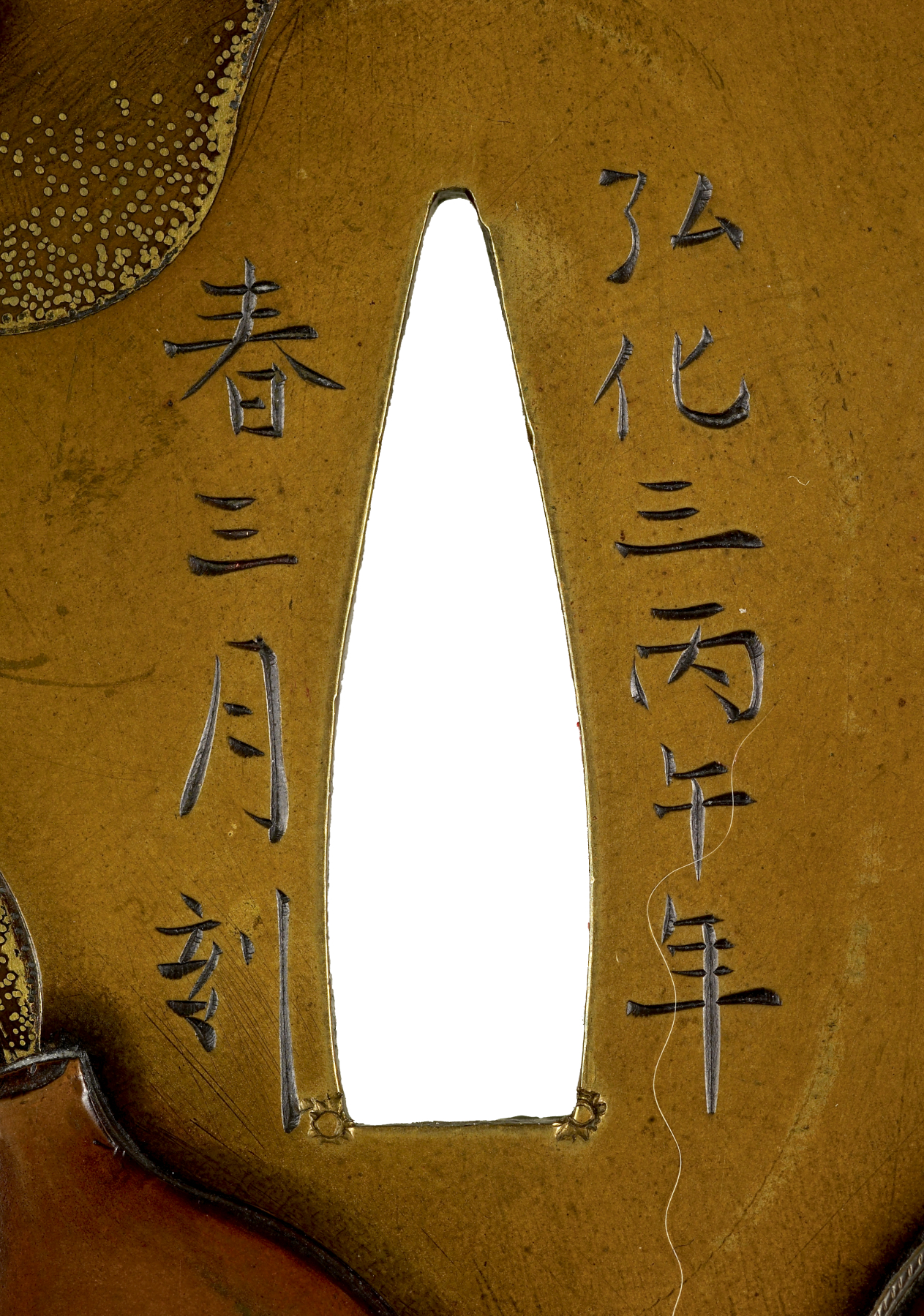Tsuba with the Mule of the Taoist Immortal Chokaro Emerging from a Magic Gourd
(Japanese Military Armor)
The horse at the upper left of this tsuba is emerging from the gourd at the lower right. This is an illustration of the idiom "like a horse coming out of a gourd," which is used to describe unexpected things. The saying may have developed from stories of the Chinese immortal Chokaro (Ch. Zhang Guo [Chang Kuo]) who carried his magical mule in a gourd. On the reverse, the phrase "Ningen banji" is inscribed along the upper and left sections. These are the first words of the proverb "Human affairs are like Saio's horse." This proverb means that things which may appear to be good fortune can sometimes be bad luck and visa versa. It comes from a story about an old man named Saio who had good luck and bad luck brought to him through incidents with his horse.
Inscription
Provenance
Provenance (from the French provenir, 'to come from/forth') is the chronology of the ownership, custody, or location of a historical object. Learn more about provenance at the Walters.
Henry Walters, Baltimore [date and mode of acquisition unknown]; Walters Art Museum, 1931, by bequest.
Geographies
Japan (Place of Origin)
Measurements
H: 3 1/8 in. (8 cm)
Credit Line
Acquired by Henry Walters
Location in Museum
Not on view
Accession Number
In libraries, galleries, museums, and archives, an accession number is a unique identifier assigned to each object in the collection.
In libraries, galleries, museums, and archives, an accession number is a unique identifier assigned to each object in the collection.
51.221








